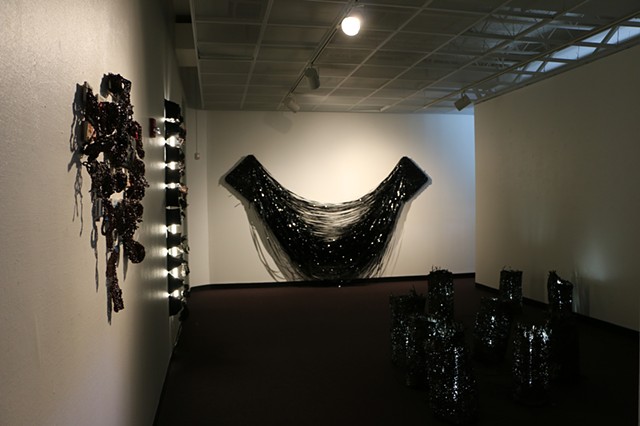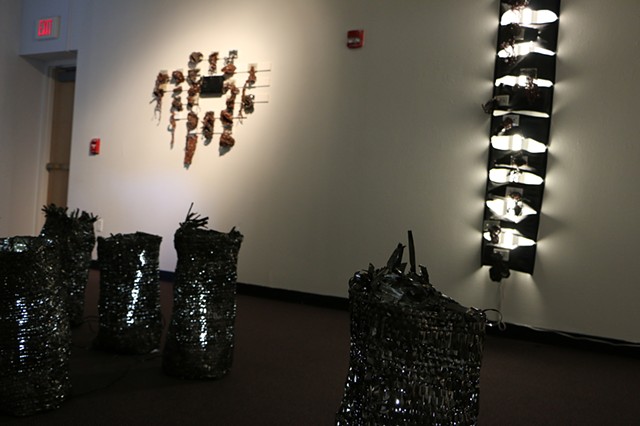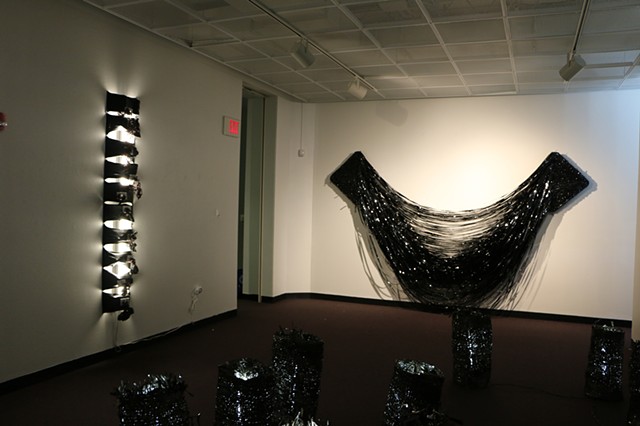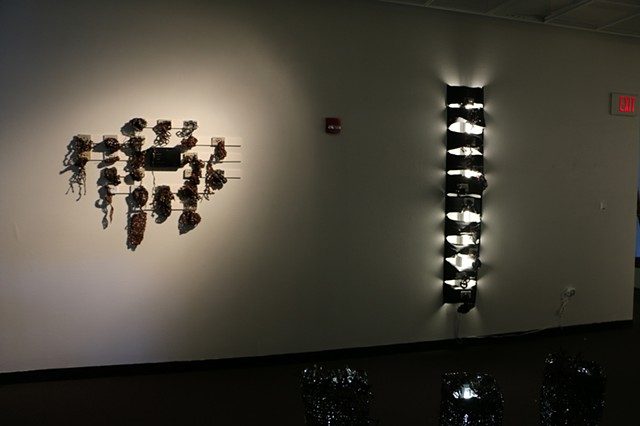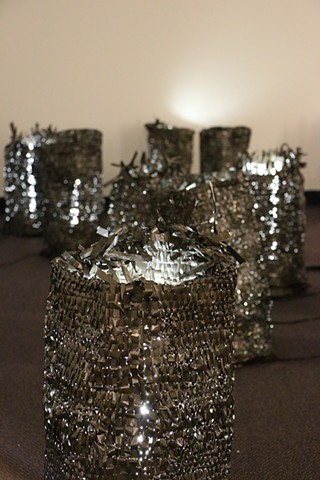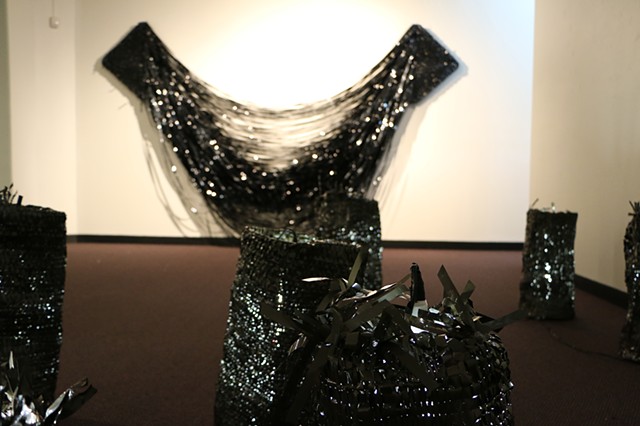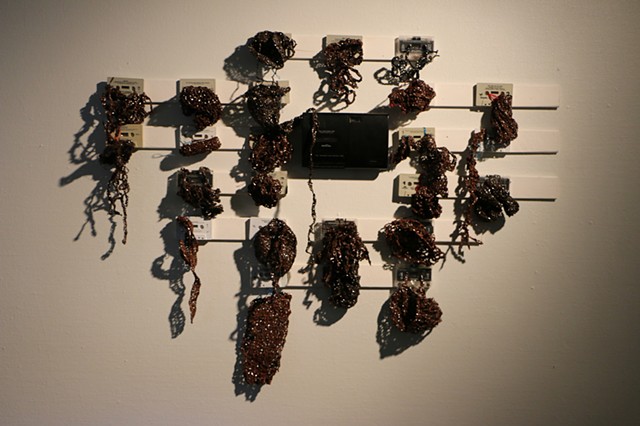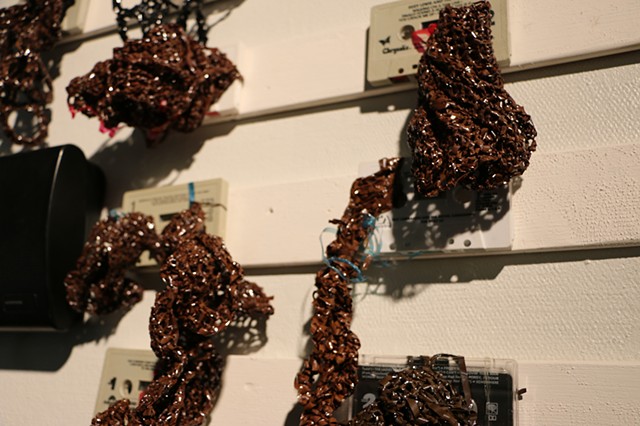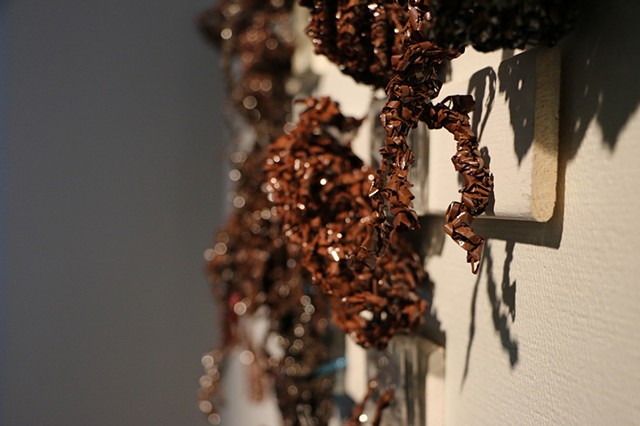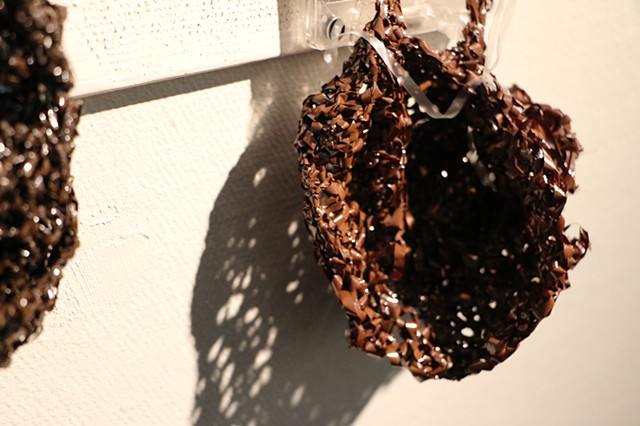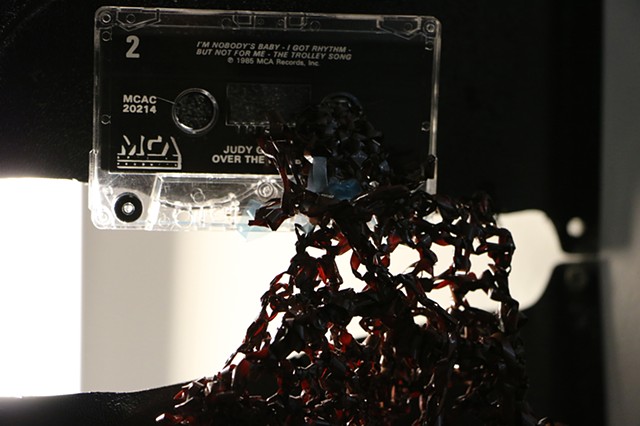Nothing from Something At Truman State University; Kirksville, MO
A series of work influenced by minimal and post-miminal art from the 60s-70s and Minimal Music Visualization. Artists such as: Eva Hesse, Sol LeWitt, Robert Morris, Lee Bontecou, Sheila Hicks, Claire Zeisler, Magdalena Abakanowitz aesthetically collaborate with minimal music and light composers, Alvin Lucier, Steve Reich, LaMonte Young, Robert Irwin, Felix Gonzales-Torres, David Tudor and of course John Cage. Emphasizing the role of process in fiber arts and minimal music, this work addresses ideas of (mis)communication, spirituality, interconnections, repetition, post-structuralist aesthetics, and art history.
The conceptual artist was a mystic.
The artist was a conceptual mystic.
The artist was a mystical concept.
The conceptual mystic was an artist.
Sol LeWitt
The line between art and spirituality in contemporary art is an often tenuous one. Spiritual Art or art about religion is generally characterized as either polemic or naive. In other words, it is didactically critical or unabashedly uncritical. I often wonder if art and spirituality can be sincerely and critically united.
Ideas such as cycles (looping), duration, limitations, ritual (process), and reductionism have parallel relationships in art and religion. I use the history of minimal music and visual art as a departure point for my work. I find striking similarities between these art movements and various aspects of world religions. Often governed by codes, rules, scripture, instructions or guides, a sense of distillation is prevalent. Whether it is form, content, authority, or dietary restrictions, and personal actions, these limits function to develop new comprehension and refined awareness. What metaphors can be gleaned from repetitive action and production? By restricting creative options what new possibilities arise? Does meditation in mind and hand reveal deeper meaning?
The materials I utilize reflect on the the history of recorded media, access to information and the post minimal sound and art movements, specifically the abrupt absence or abandonment of the movement in the 1980's. What happens when post minimalism meets postmodernism?
